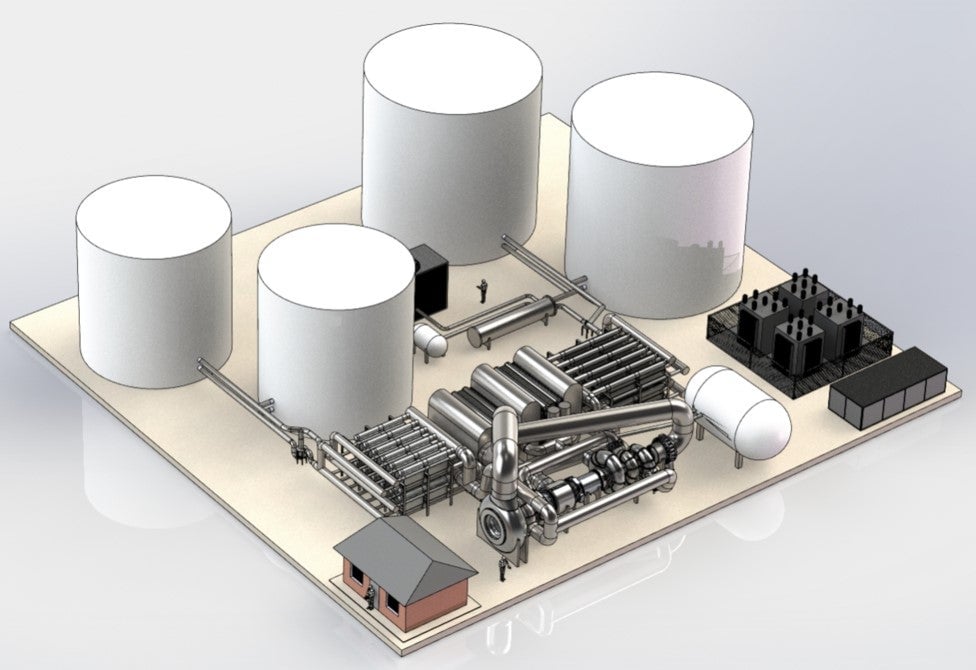Bill Gates-led fund is investing in a startup to build a cheap battery using a “refrigerator on steroids”
In many parts of the world, it’s cheaper to build new renewable-energy projects than fossil-fuel power plants. To fully replace carbon-based fuels, however, we need solutions to store large amounts of energy for when the sun doesn’t shine and the wind doesn’t blow.


In many parts of the world, it’s cheaper to build new renewable-energy projects than fossil-fuel power plants. To fully replace carbon-based fuels, however, we need solutions to store large amounts of energy for when the sun doesn’t shine and the wind doesn’t blow.
So far, the answer has been lithium-ion batteries. However, because these batteries are expensive, installations on the electric grid in places like California and Australia are only able to store enough energy to provide power for at most a few hours.
The Boston-based startup Malta thinks it has one answer in the form of heat pumps, chilled chambers, and molten salt. On Dec. 19, it graduated from Alphabet’s secretive X lab and raised $26 million toward building its first full-scale pilot plant. The funding round was led by Breakthrough Energy Ventures, which was set up by Bill Gates with support from the likes of Jeff Bezos, Michael Bloomberg, Jack Ma, and Mukesh Ambani.
A huge refrigerator
Malta developed the technology based on the work of Nobel laureate Robert Laughlin. He explained the system in a research paper in the Journal of Renewable and Sustainable Energy, published in August 2017.
The idea is to use excess electricity from solar panels and wind turbines to run a large heat pump. “It’s essentially a refrigerator on steroids,” says Adrienne Little, the startup’s technical lead on heat exchangers. It extracts heat from a chamber full of antifreeze-like chemicals, lowering the temperature to –70°C (–94 °F). That heat is dumped in another chamber where salt—not exactly table salt, but similar—is heated to as high as 565°C (1,050°F). These insulated chambers hold the energy until it’s needed. That’s when a heat engine—essentially like a steam turbine inside a power plant—is used to convert the heat and the cold back to usable electricity.

For every unit of electricity fed into the system, only about half is recovered, says Malta’s CEO Ramya Swaminathan. That’s because heat pumps are much less efficient than lithium-ion batteries.
But that’s a sacrifice worth making because the overall cost of the system could be potentially lower than one using lithium-ion battery packs, which cost, on average, $176 per kilowatt-hour (kWh), according to Bloomberg New Energy Finance. (One kWh is the same amount of energy needed to run 10 100-watt light bulbs for one hour). Laughlin’s paper calculates that the cost of building a heat-pump system could be as low as $12.7 per kWh. That’s because Malta is essentially using off-the-shelf ingredients to build the “battery”—heat pumps, pipes, insulated tanks, salt, and antifreeze chemicals
Energy researchers believe that, if the world is to store vast amounts of renewable energy, the cost needs to be close to $10 per kWh. That’s approximately the cost of the most commonly used energy-storage technology: pumped hydro storage, which works by using excess electricity to pump water into a reservoir at an altitude and then letting the water fall on turbines to generate electricity when needed. But hydropower’s use depends on the geography, requiring access to mountains and large rivers.
A new bet
Malta will use the money it raised to build a pilot-scale 10 MW facility that can provide power for up to 10 hours. The startup hasn’t yet decided the location of the plant and it won’t be up and running for “several years,” said Swaminathan. The footprint of the pilot facility will be about 2500 sq meters—about half a football field. Many of the components scale up without requiring a commensurate increase in land area, though. For example, a 100 MW facility will need about 15,000 sq meters—that is, 10 times of energy storage for six times the area.
Breakthrough Energy Ventures says it only invests in companies that have the potential to cut annual global emissions by as much as 500 million metric tons. Malta is its fourth investment in energy storage. The other three companies are Form Energy (which aims to build a “reversible power plant”), Quidnet Energy (which stores energy in shale reservoirs), and QuantumScape (which has the technology to build a solid-state battery).
Bill Gates has bet and lost money on other energy-storage startups. In the last decade, he funded Aquion Energy, which built a sodium-ion battery, but went bust. The founder of Aquion told Quartz earlier this year that he believes one of the reasons for the company’s failure was because it was ahead of its time. Swaminathan, Malta’s CEO says that she’s closely watched the industry and the example of Aquion, and believes the time is right; Malta, Swaminathan adds, already has interest from data centers, large industries, and the defense sector.
🌎 Quartz is running a series called The Race to Zero Emissions that explores the challenges and opportunities of energy-storage technologies. Sign up here to be the first to know when stories are published.